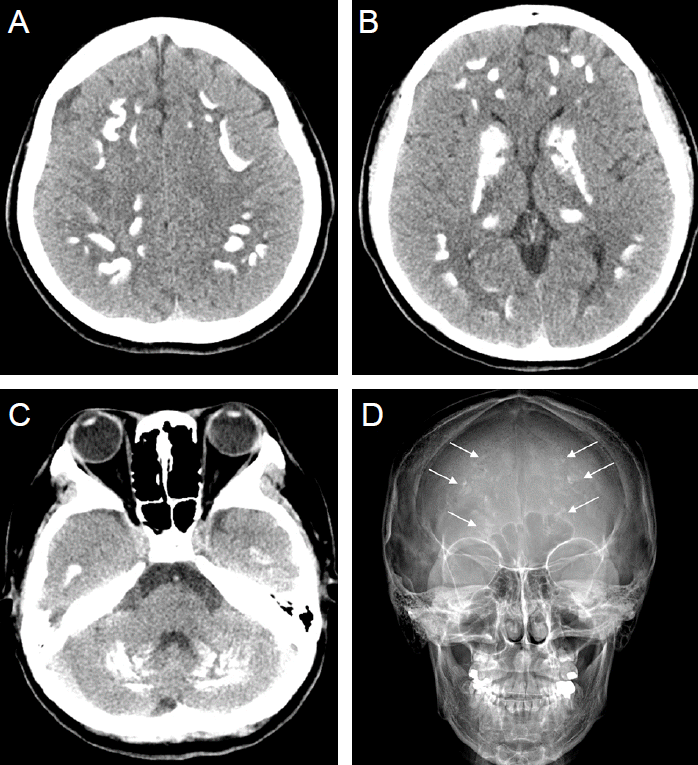A 23-year-old, previously healthy woman presented with a first-onset generalized tonic-clonic seizure. Neurological examination was unremarkable. Computed tomography of the brain showed extensive symmetric calcifications in the corticomedullary junctions, basal ganglia, thalami, and cerebellar hemispheres (Fig. 1). Serum laboratory studies revealed levels of calcium 5.7 mg/dL (8.6-10.2 mg/dL), phosphorus 4.4 mg/dL (3.5-4.5 mg/dL), and parathyroid hormone 151 pg/mL (10-65 pg/mL) consistent with pseudohypoparathyroidism. Her clinical features of a round face, short stature, and short fourth and fifth metacarpals suggested pseudohypoparathyroidism type Ia, Albright’s hereditary osteodystrophy [1]. Pseudohypoparathyroidism is one of medical conditions which can be accompanied by brain calcifications, especially strio-pallido-dentate calcinosis [2].
Journal List > J Neurocrit Care > v.7(2) > 1154803
- TOOLS
- Similar articles




 PDF
PDF Citation
Citation Print
Print



 XML Download
XML Download